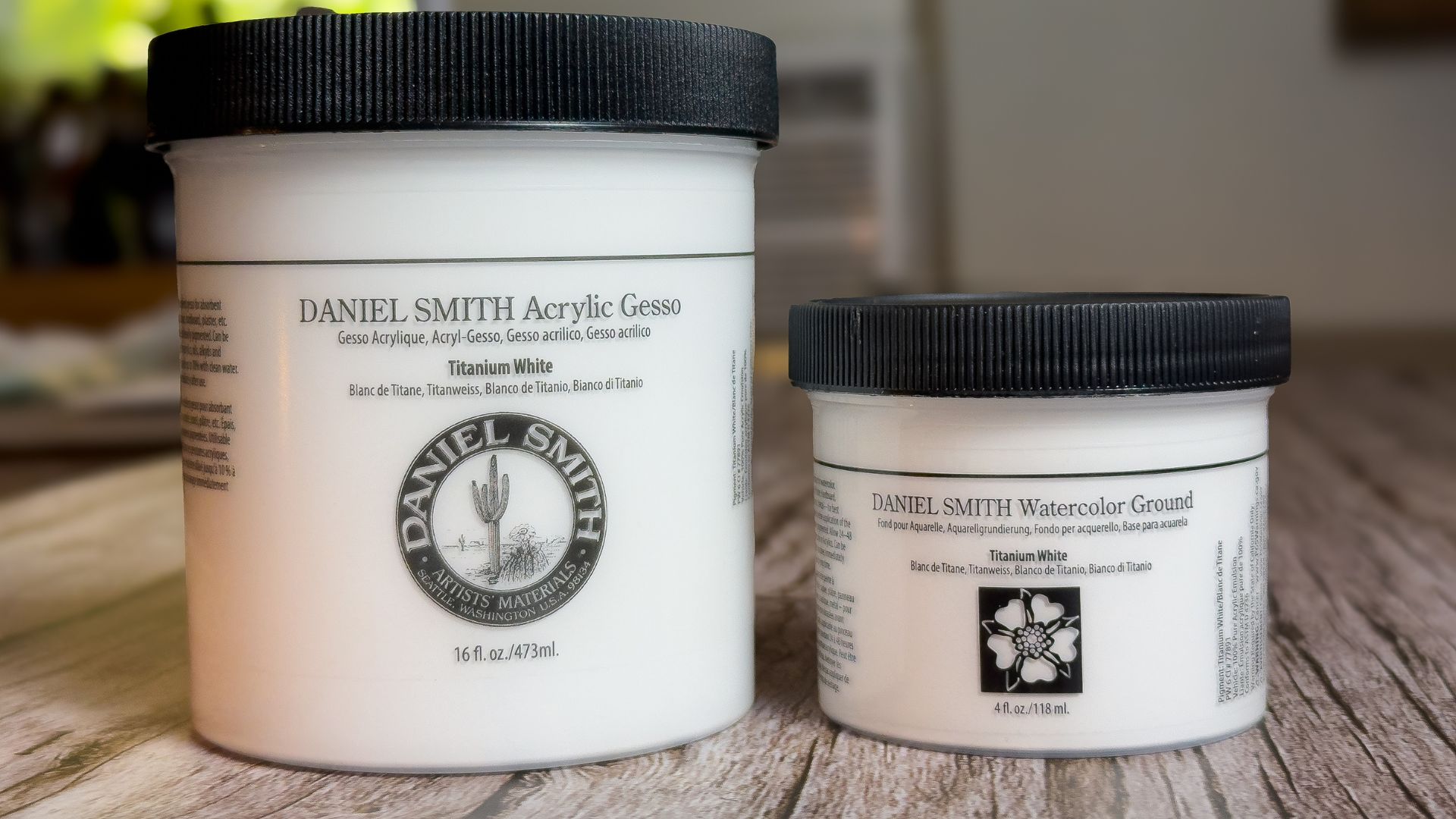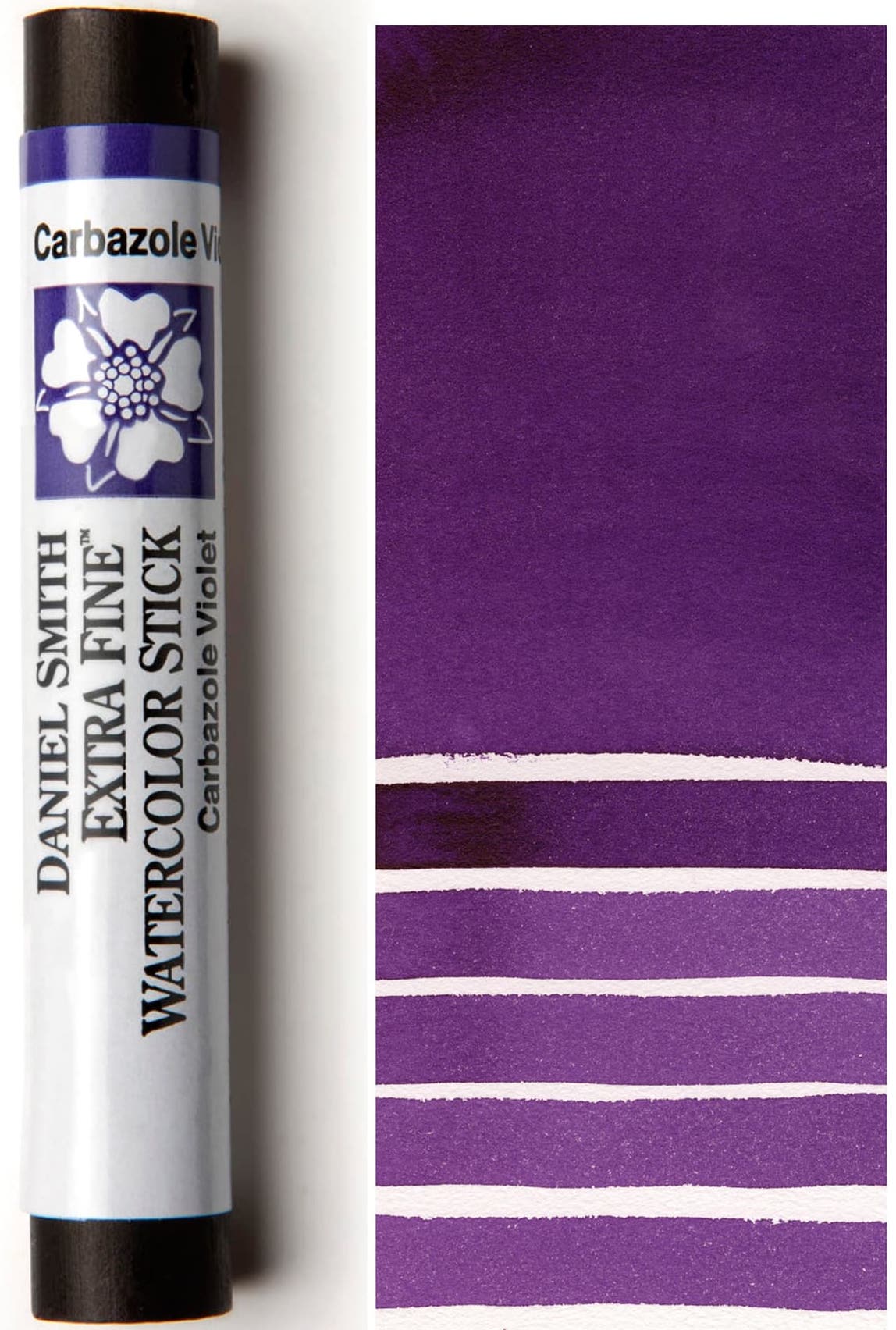If you’ve ever wondered how DANIEL SMITH Extra Fine™ Gouache performs on different prepared surfaces, this experiment is for you! I’m comparing two of our most popular surface preps — DANIEL SMITH Acrylic Gesso と ダニエルスミス水彩画グラウンド — side by side on two different substrates: mat board scraps と birch wood art panels. But the application possibilities go far beyond the two examples used here!
Why Prime Your Surface?
Priming your surface lets you customize how your paint behaves and opens up new possibilities:
- DANIEL SMITH Acrylic Gesso creates a smooth waterproof ground that’s perfect for opaque mediums like gouache.
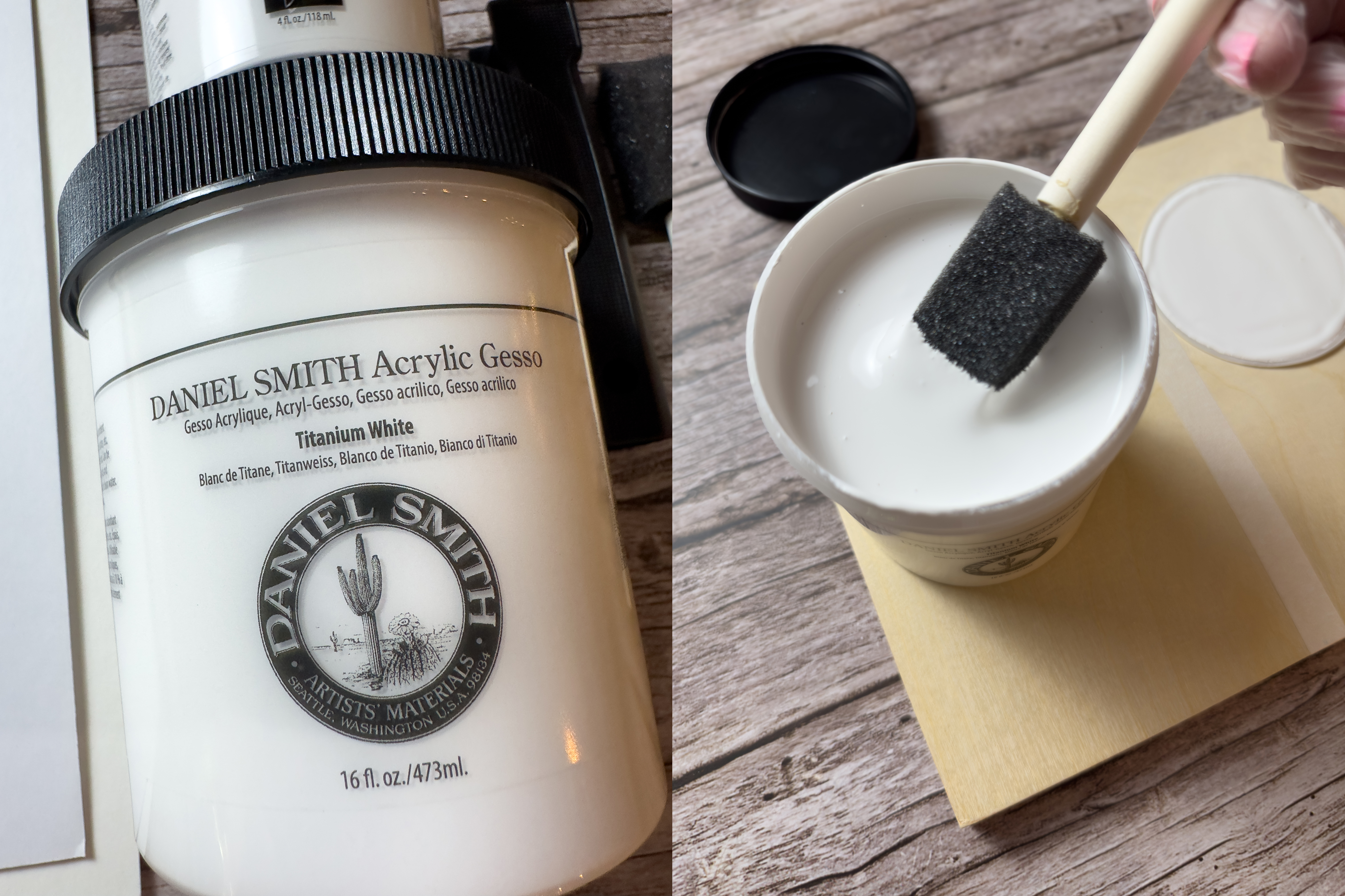
- ダニエルスミス水彩画グラウンド transforms almost any surface — wood, mat board, canvas, metal, or plastic — into one that can accept watercolor or gouache with a soft, absorbent feel.
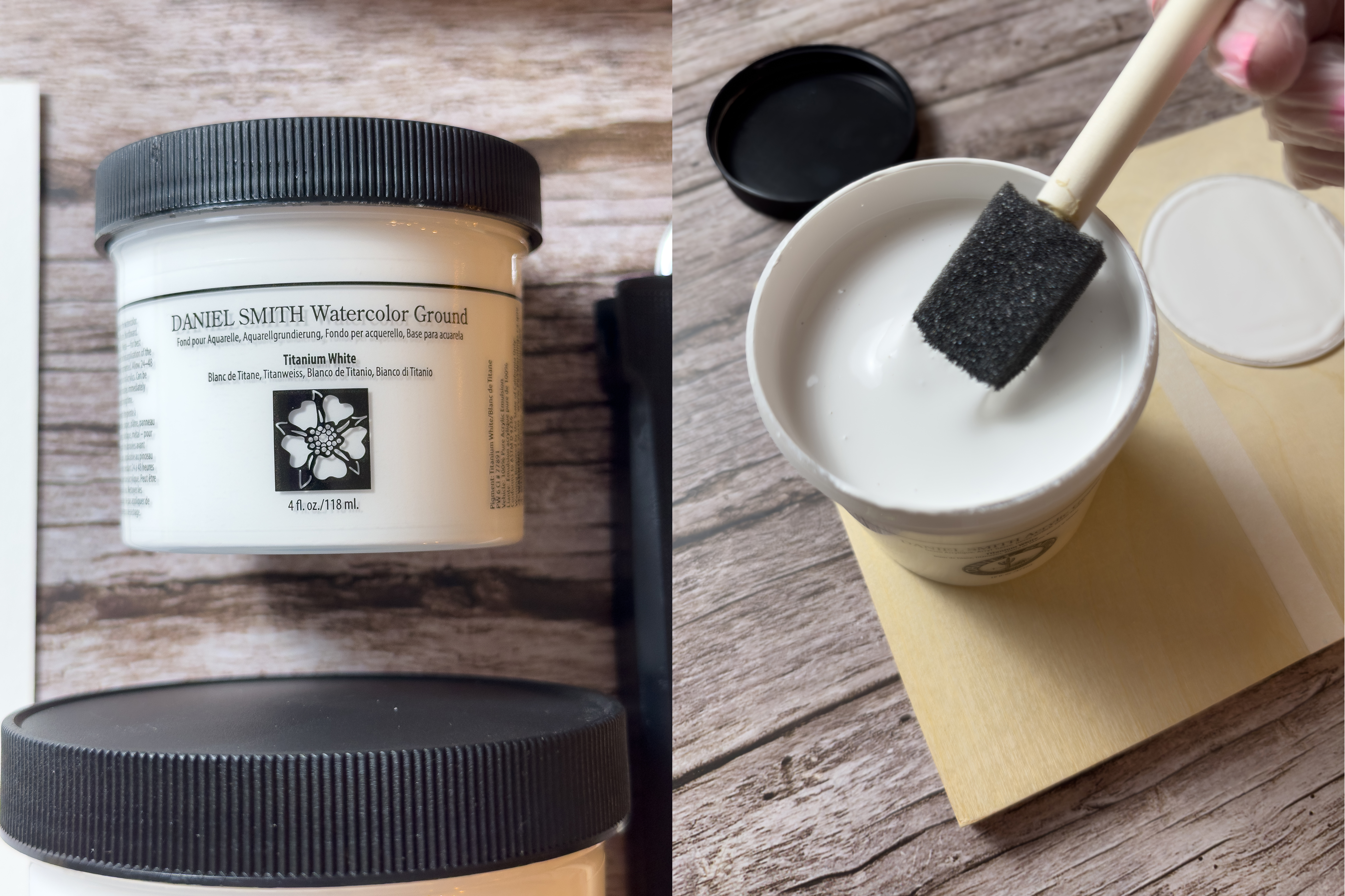
プロセス
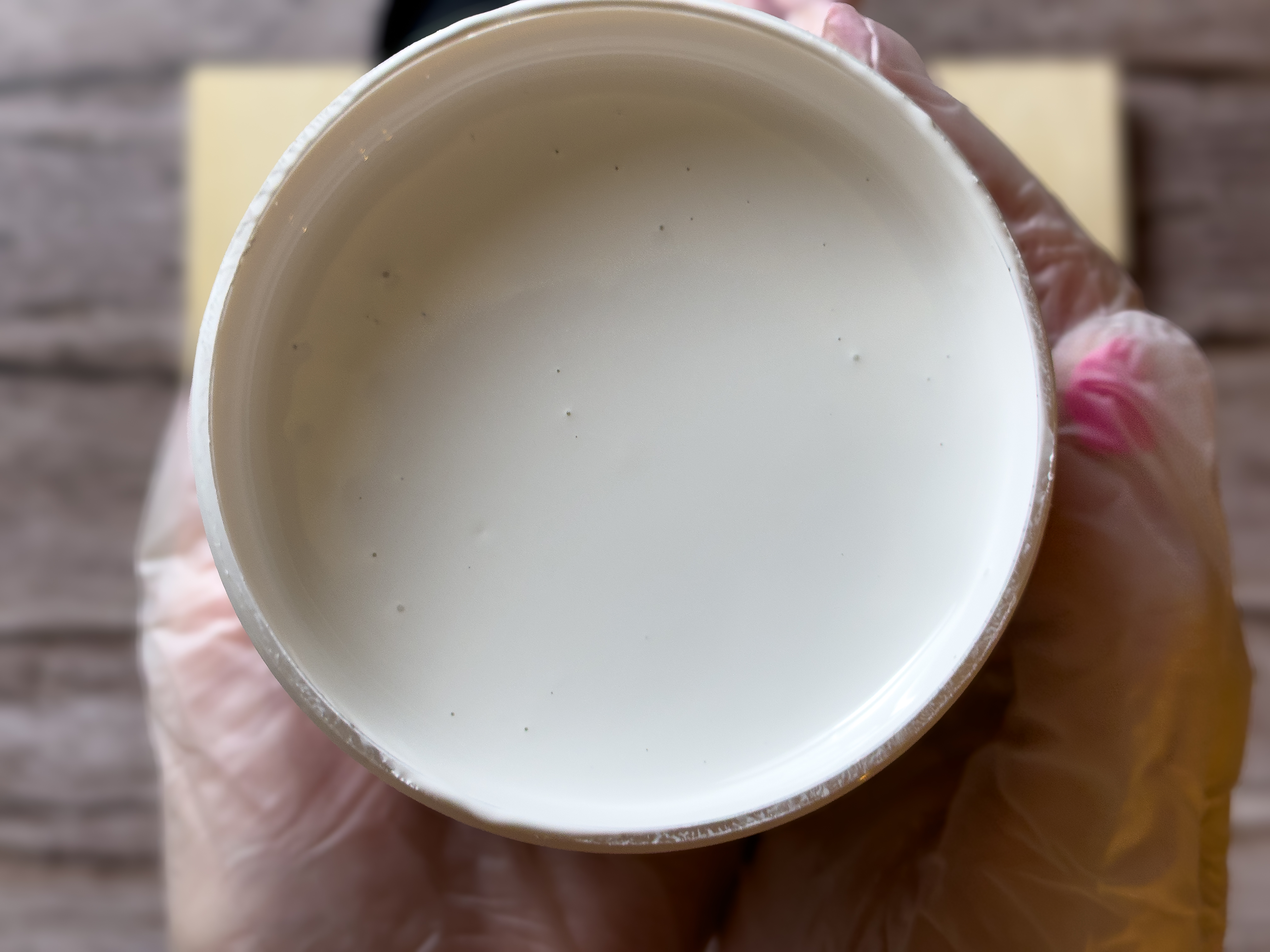
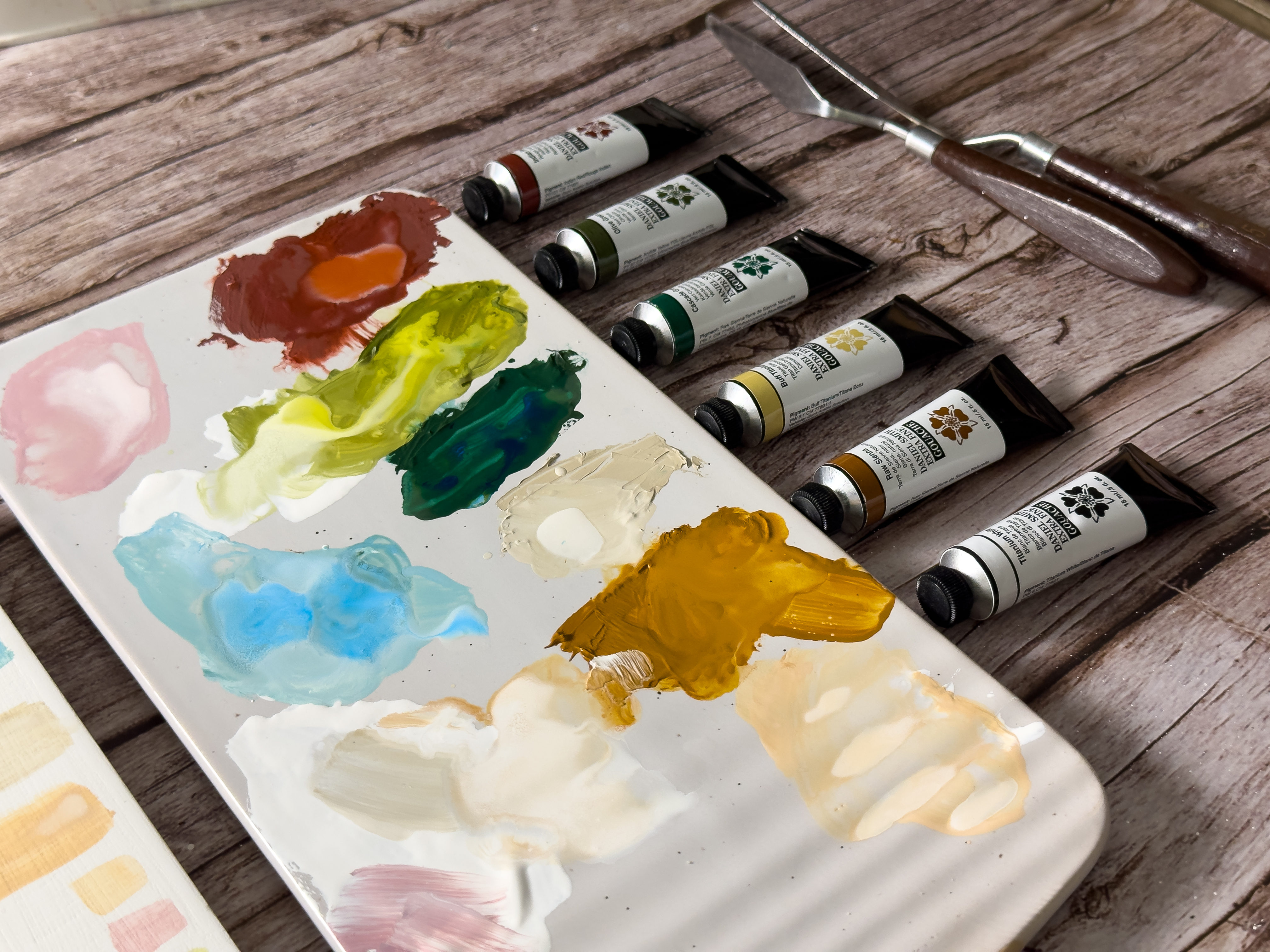
Two sets of test surfaces were prepared: scraps of mat board and birch wood art panels. Each one was divided in half — one half coated with アクリルジェッソ, the other with 水彩画の地面 — then painted with the same gouache palette for a true side-by-side comparison.
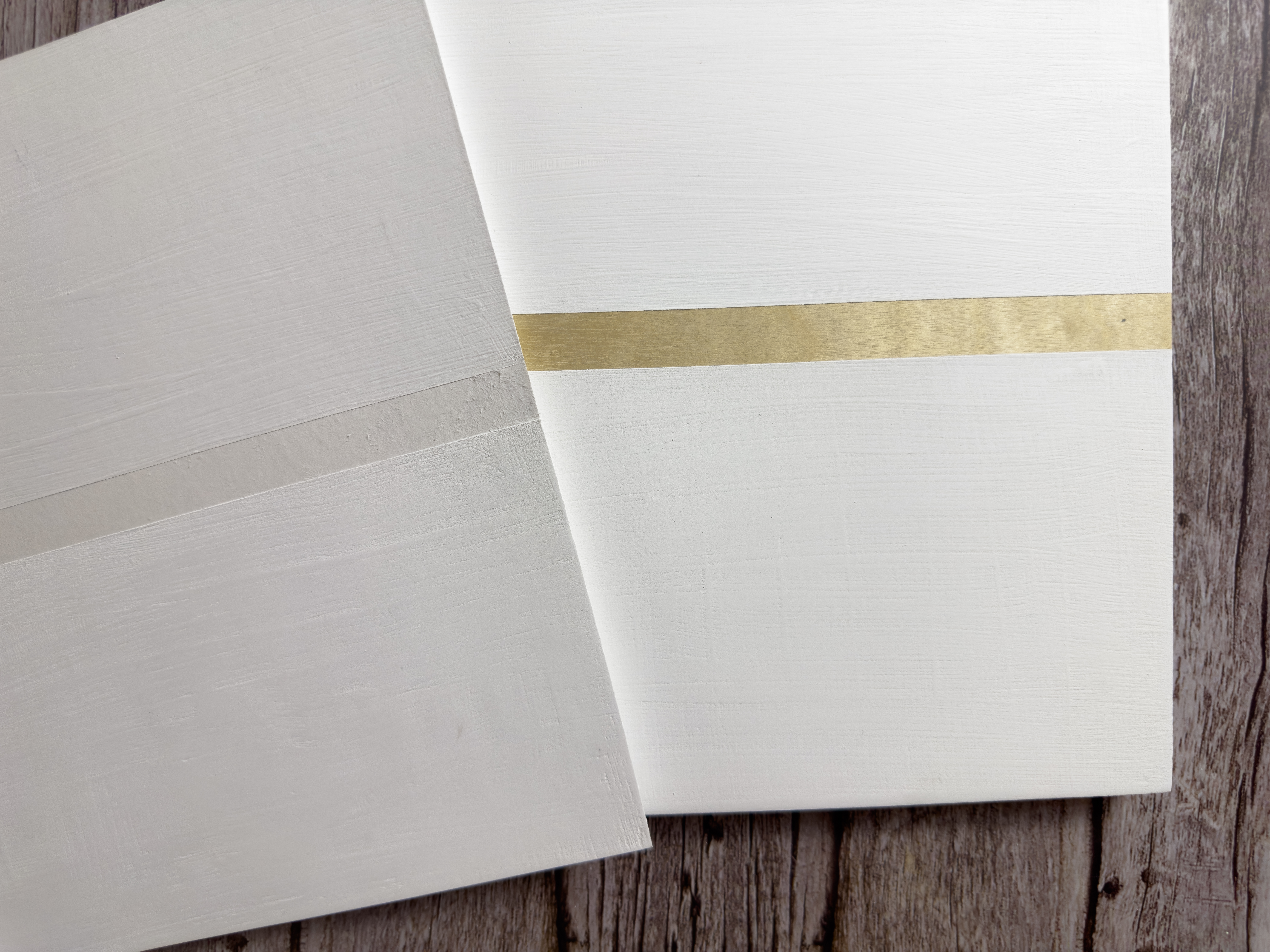
A Note on Prepping Wood Panels:
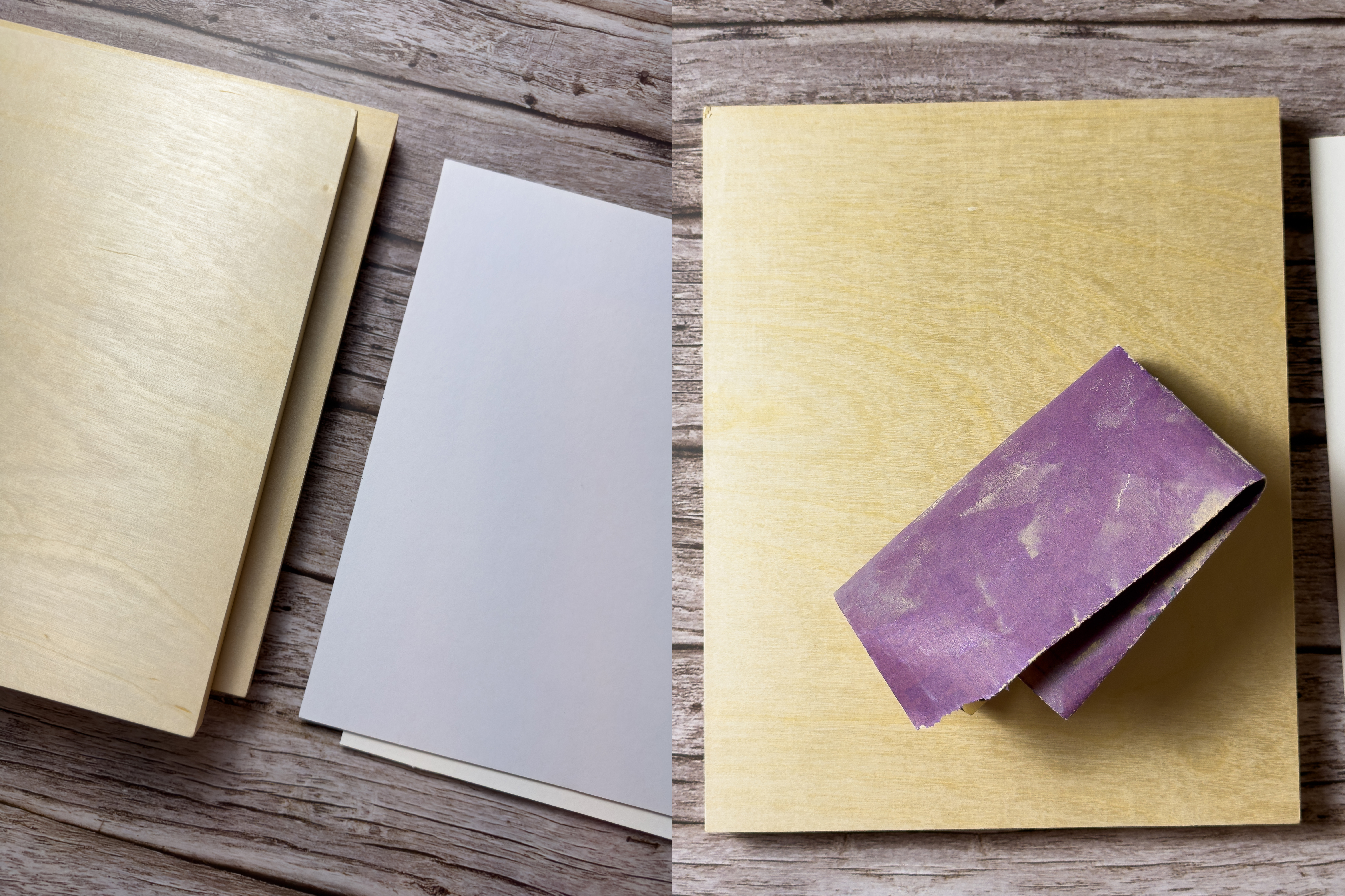
Before applying either primer, the birch wood panels were lightly sanded with a very fine grit sandpaper (220–400 grit) to smooth out the surface and remove any raised grain. After sanding, all dust was wiped away with a clean, dry cloth. This ensures the Gesso or Ground adheres evenly and gives you a smooth, stable surface for painting with gouache.
Our Findings
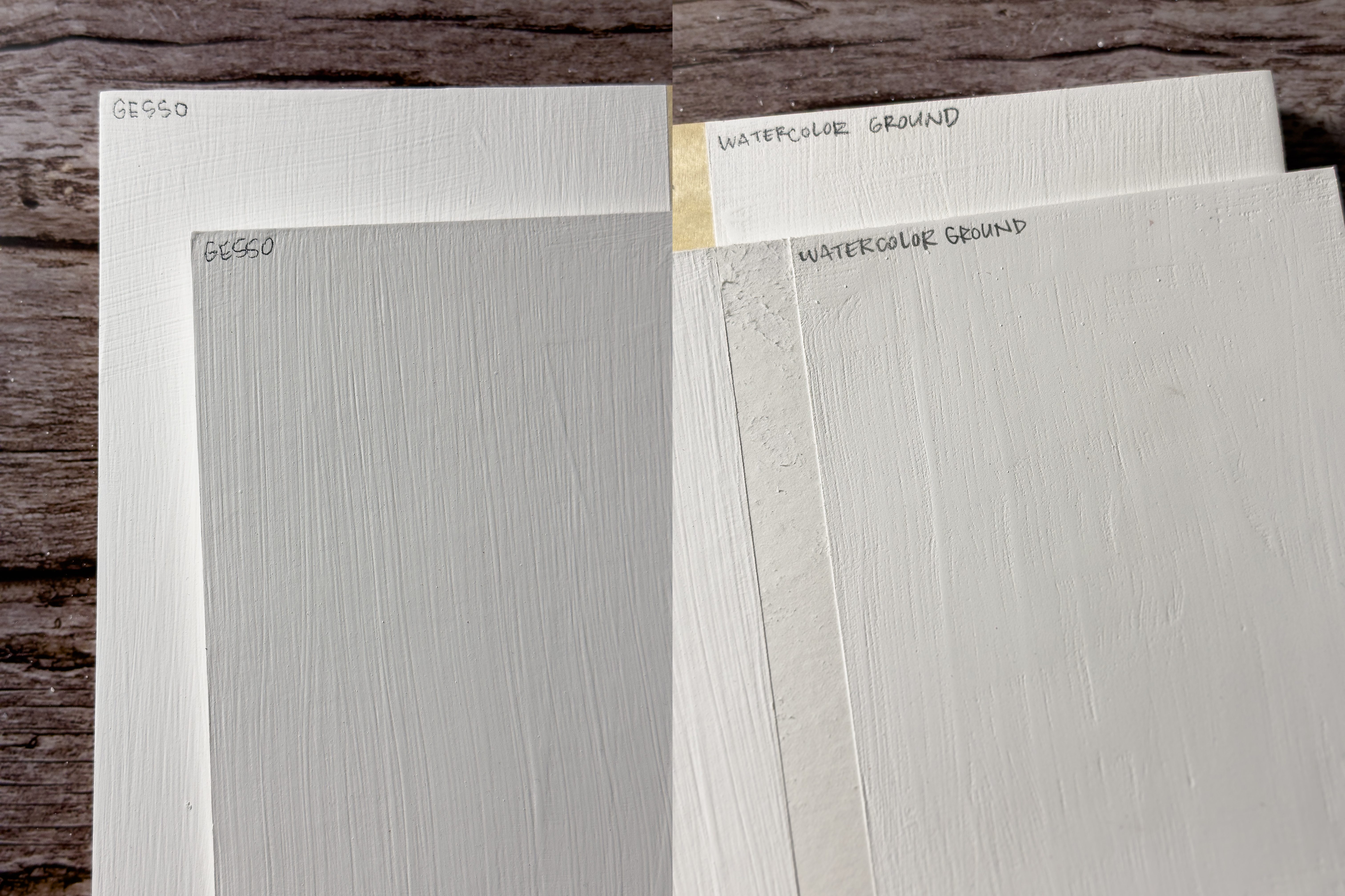
Gesso: On both wood and mat board, gouache sits more on the surface, staying vivid and reworkable longer. Edges stay crisp, making it perfect for detail work and clean color blocking. The Gesso surface itself has a bit more of a “shine” to it.
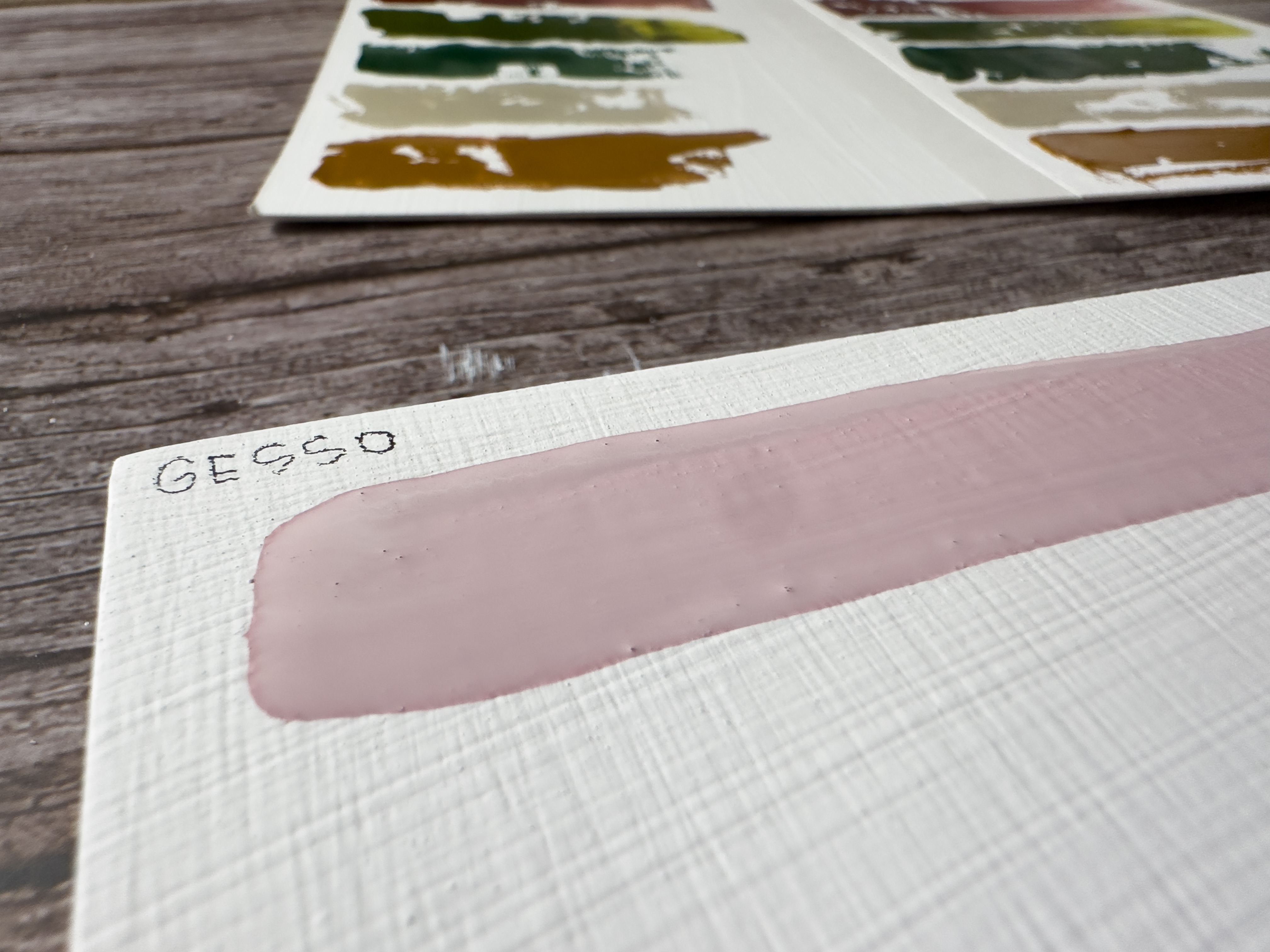
Watercolor Ground: Creates a softer, more absorbent feel. Gouache soaks in slightly, giving a velvety matte look with lovely diffused edges. On wood panels, you can even let the natural grain peek through if you like a rustic touch! Watercolor Ground dries textured and matte itself, which gives a feel more akin to watercolor paper.
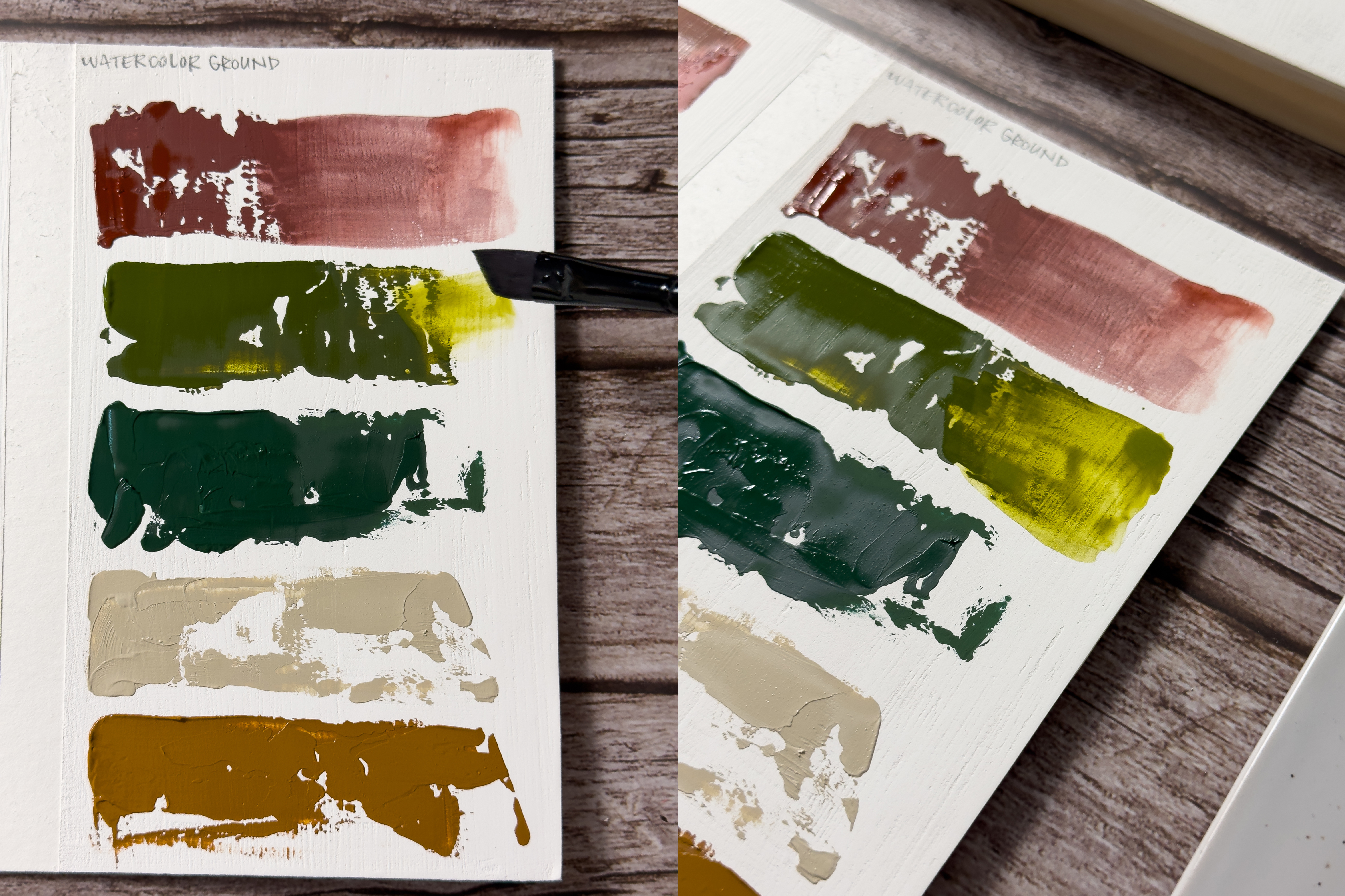
Tips for Best Results
- Use multiple thin coats of Gesso or Ground for even coverage — especially on porous wood. If using cardboard or mat board, be sure to coat both sides to avoid warping!
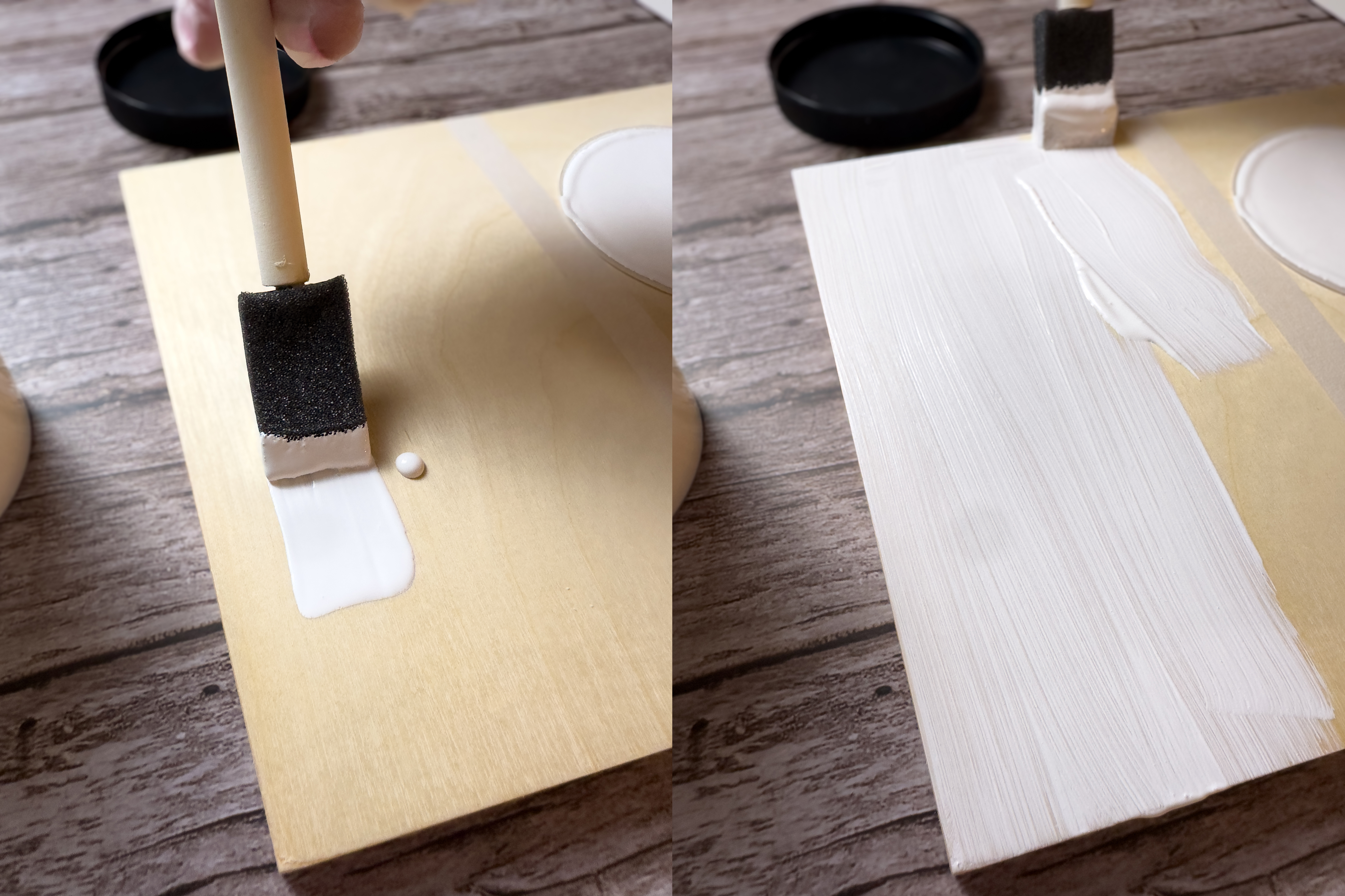
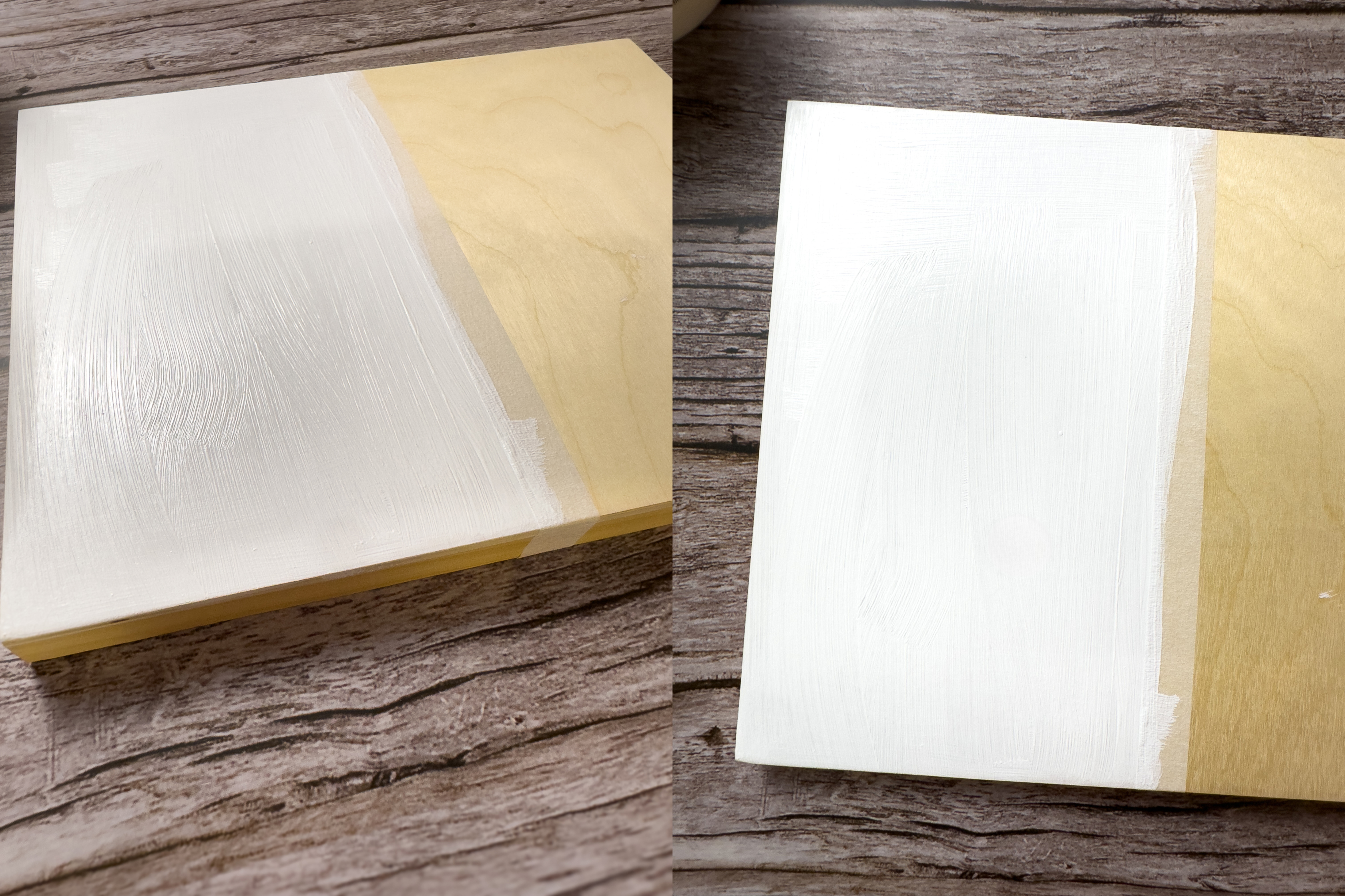
- Let Watercolor Ground cure for at least 24 hours before painting to get the best surface. For optimal results, apply in thin layers, letting each layer dry overnight. For a smooth surface, you can also gently sand each layer.
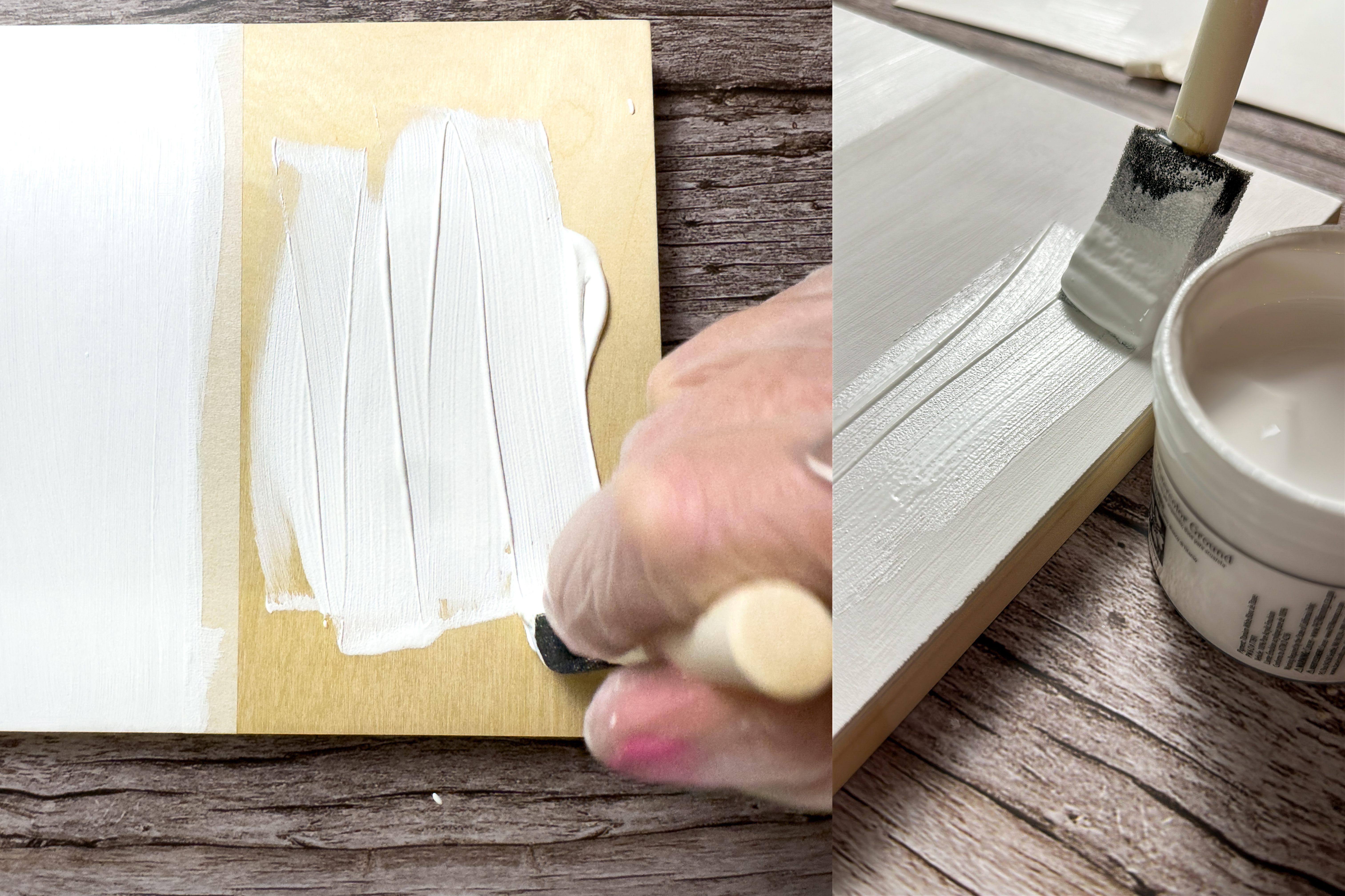
- Always lightly sand raw wood panels first to help foundation adhere smoothly.
- Swatch your colors first so you can test how they lift, layer, and blend on each surface.
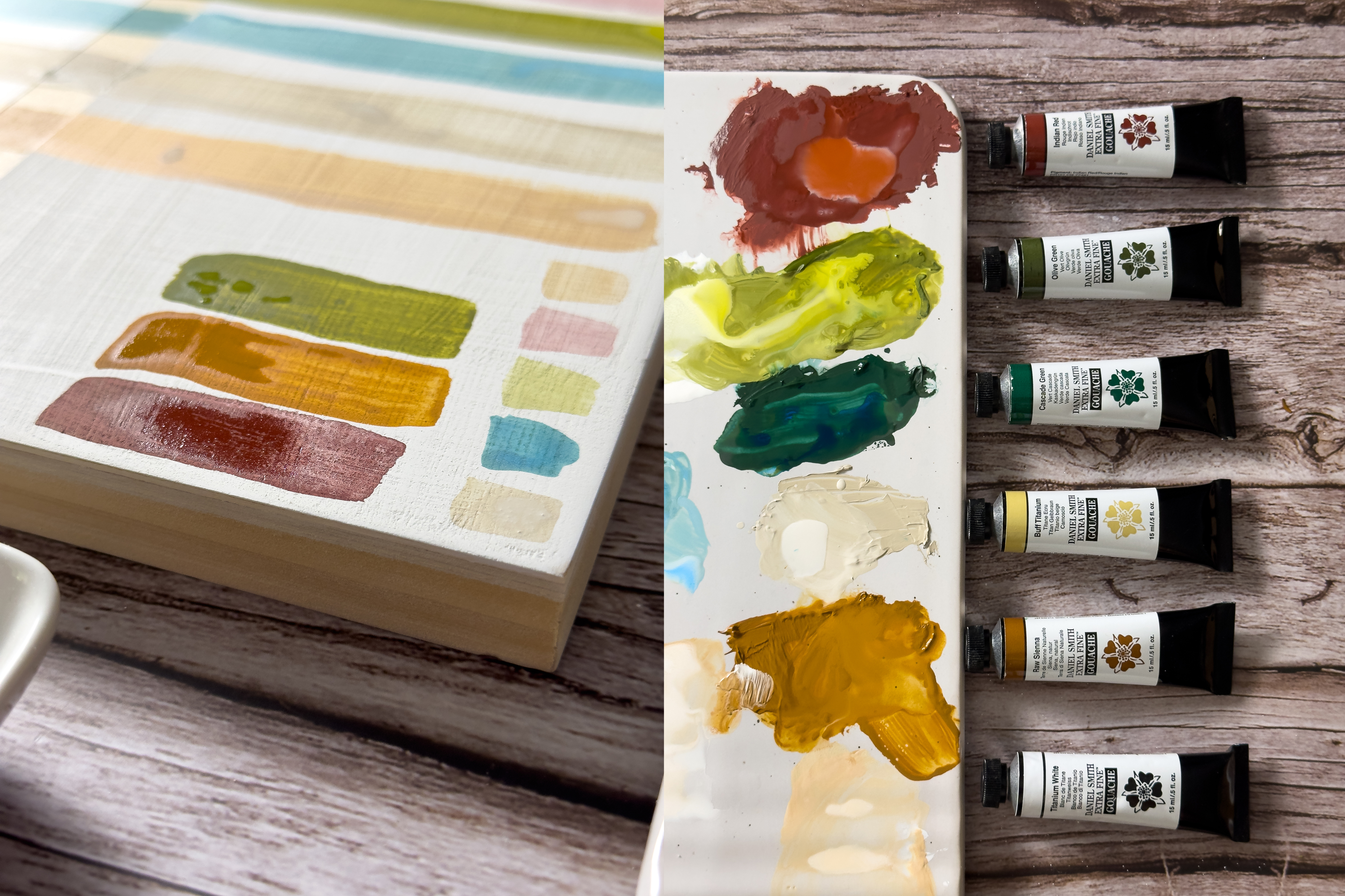
A Fun Combination
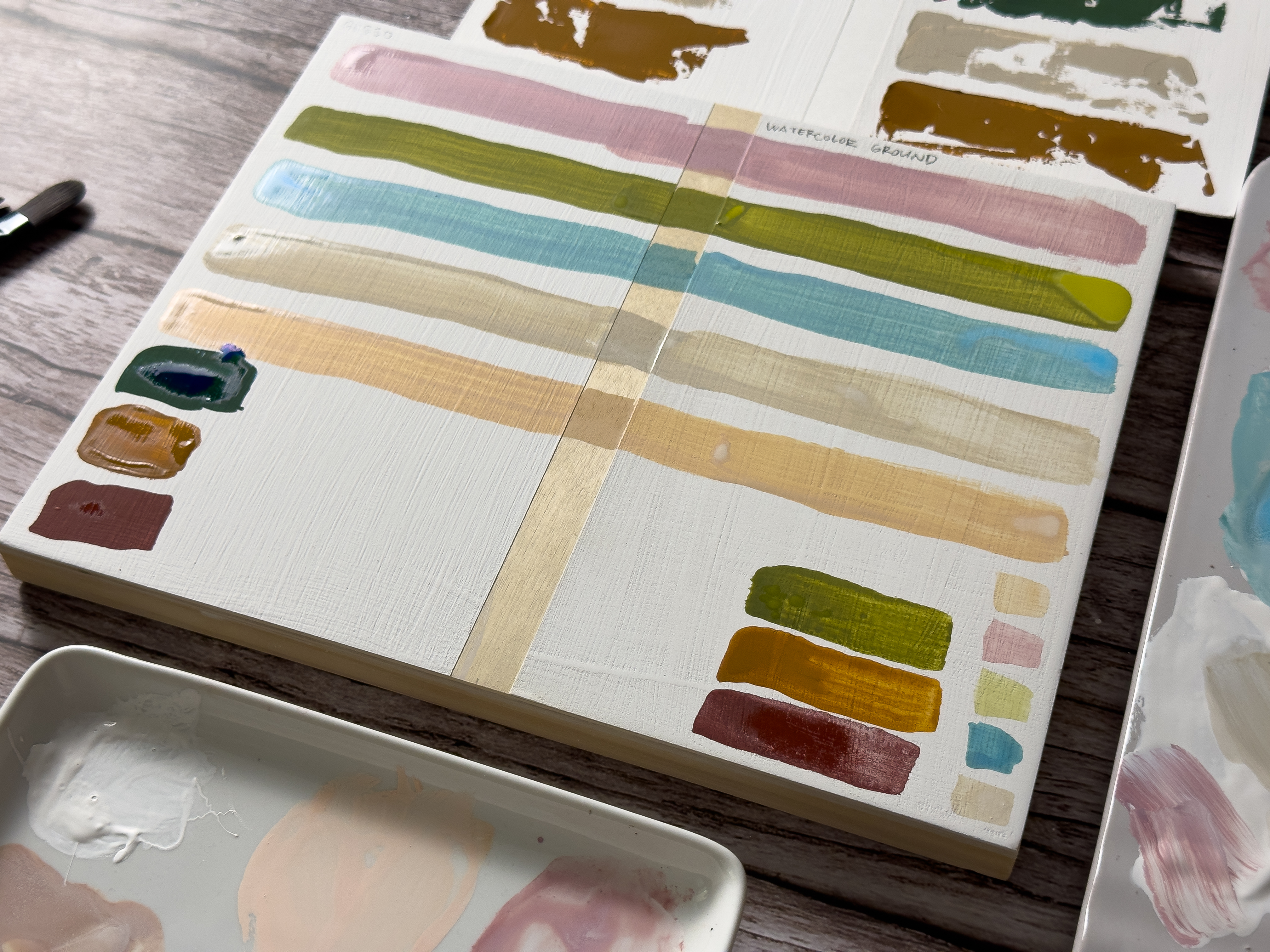
What we love most is how flexible these two options are! For detail-heavy work or crisp, bold color, ジェッソ is a favorite. For soft blends and delicate textures, 水彩画の地面 has a gorgeous, dreamy look. Together, they give you the freedom to paint wherever your inspiration takes you — whether you’re upcycling mat board scraps or using beautiful birch wood panels.
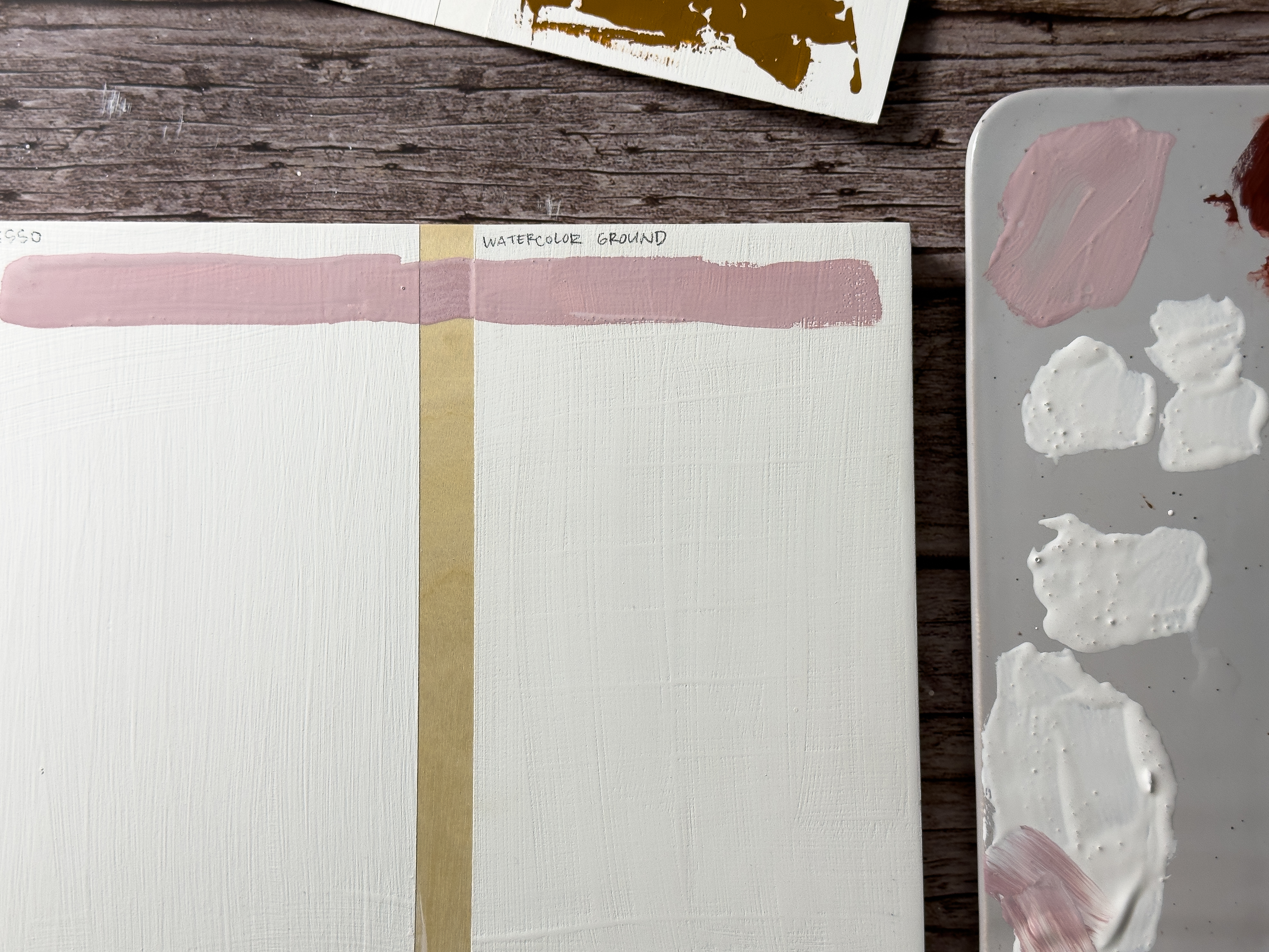
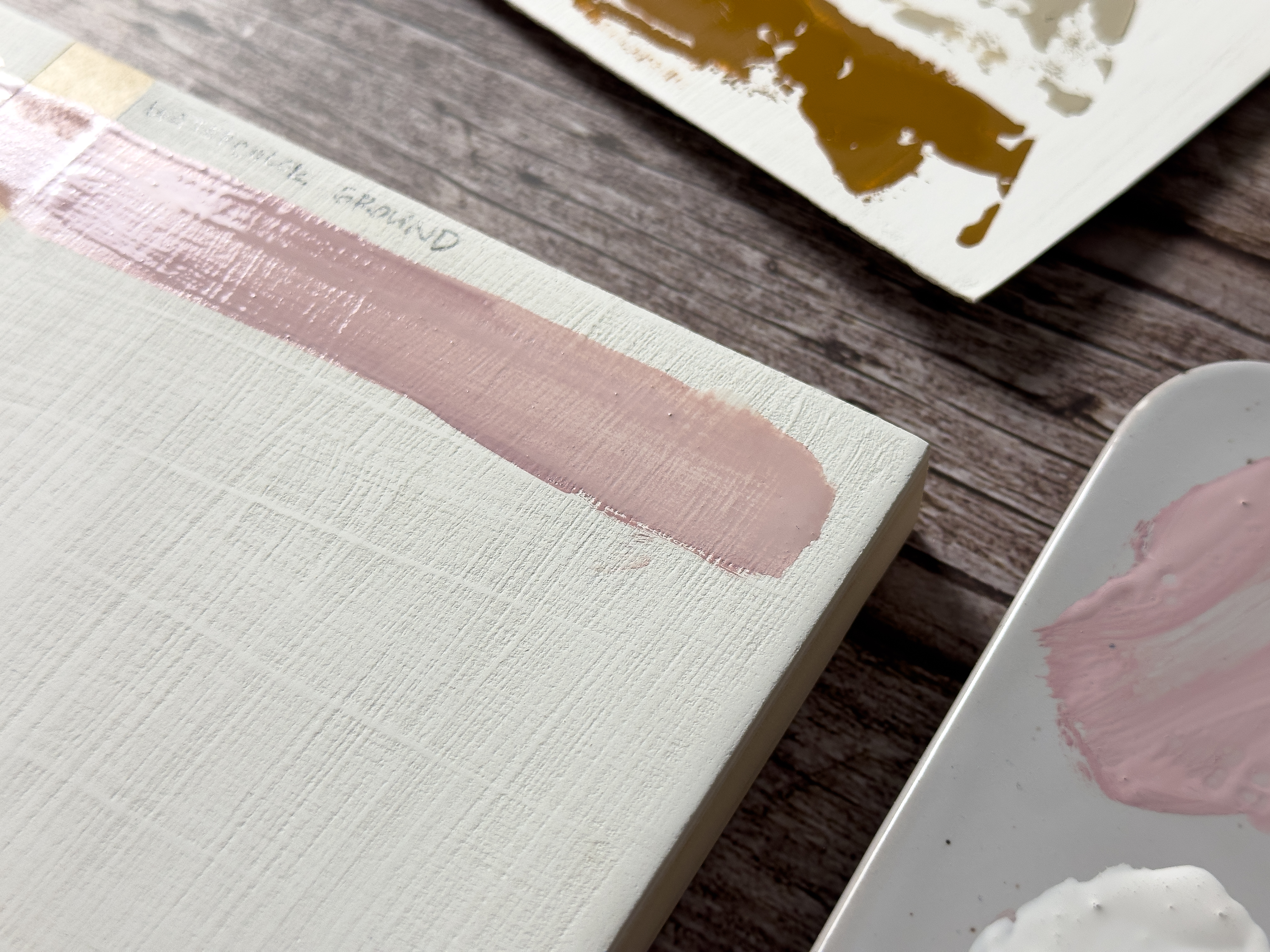
Supplies Used
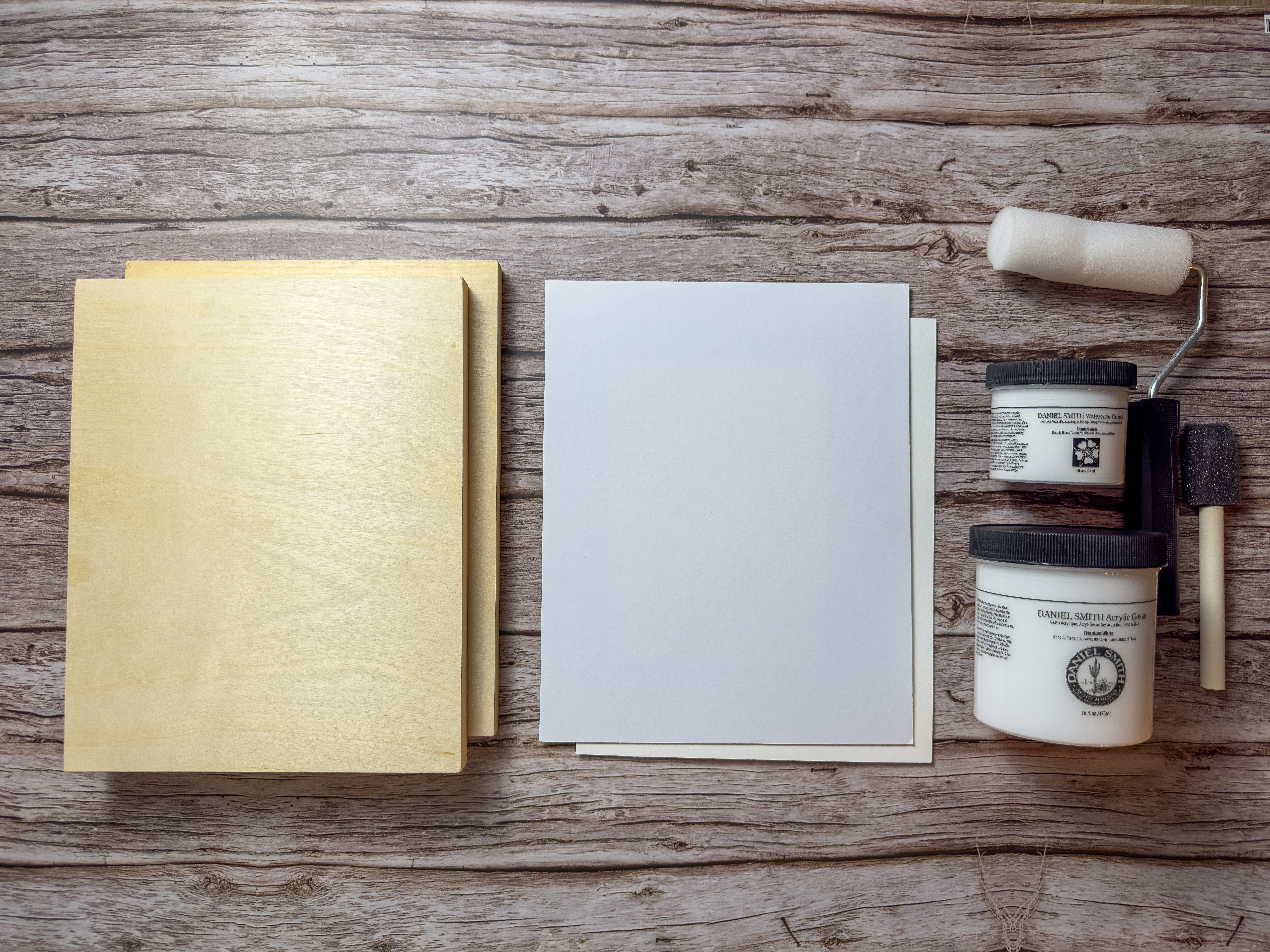
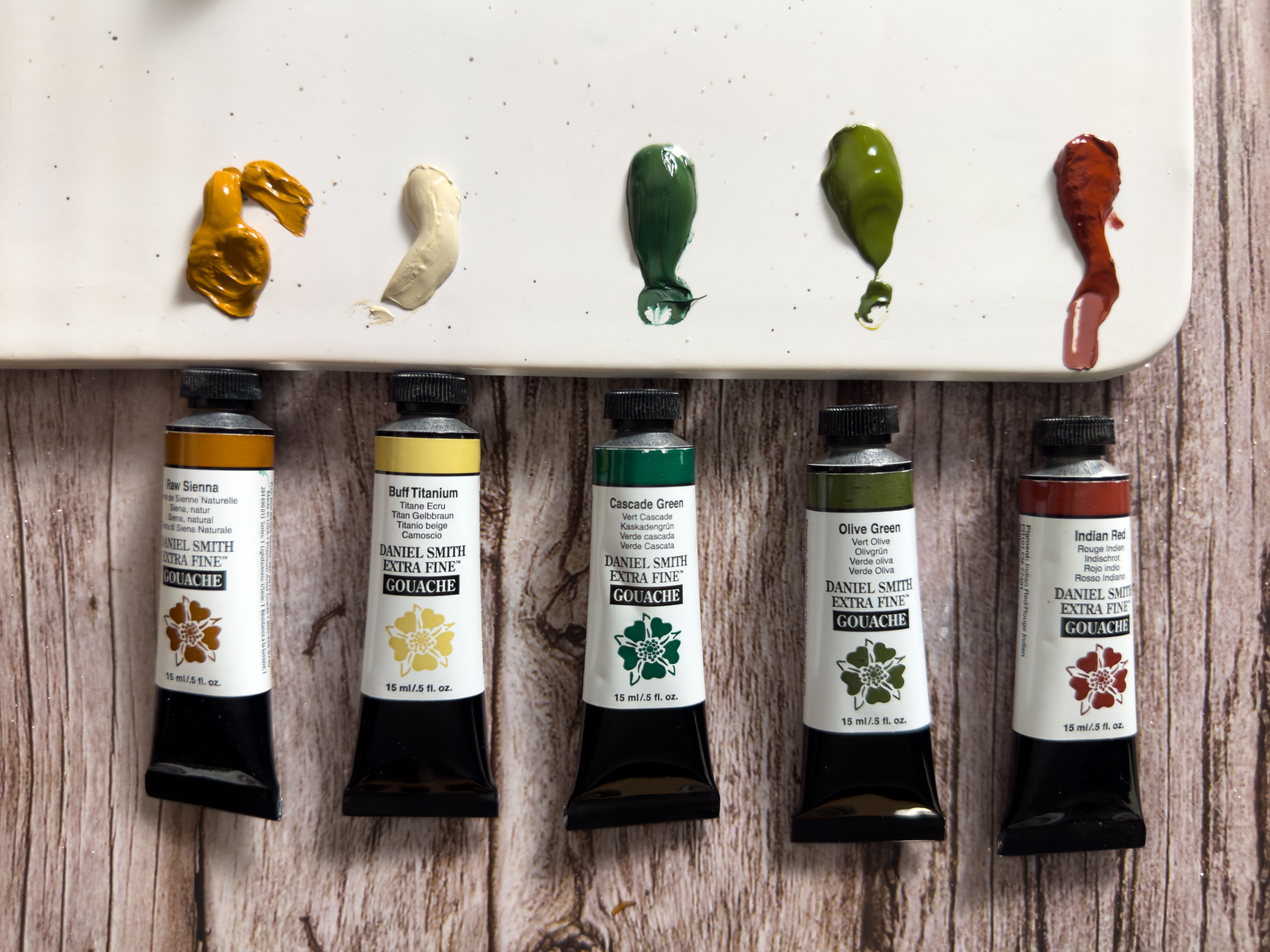
- DANIEL SMITH Acrylic Gesso-Titanium White and DANIEL SMITH Watercolor Ground (Titanium White is a classic, but Transparent is fun to experiment with too!)
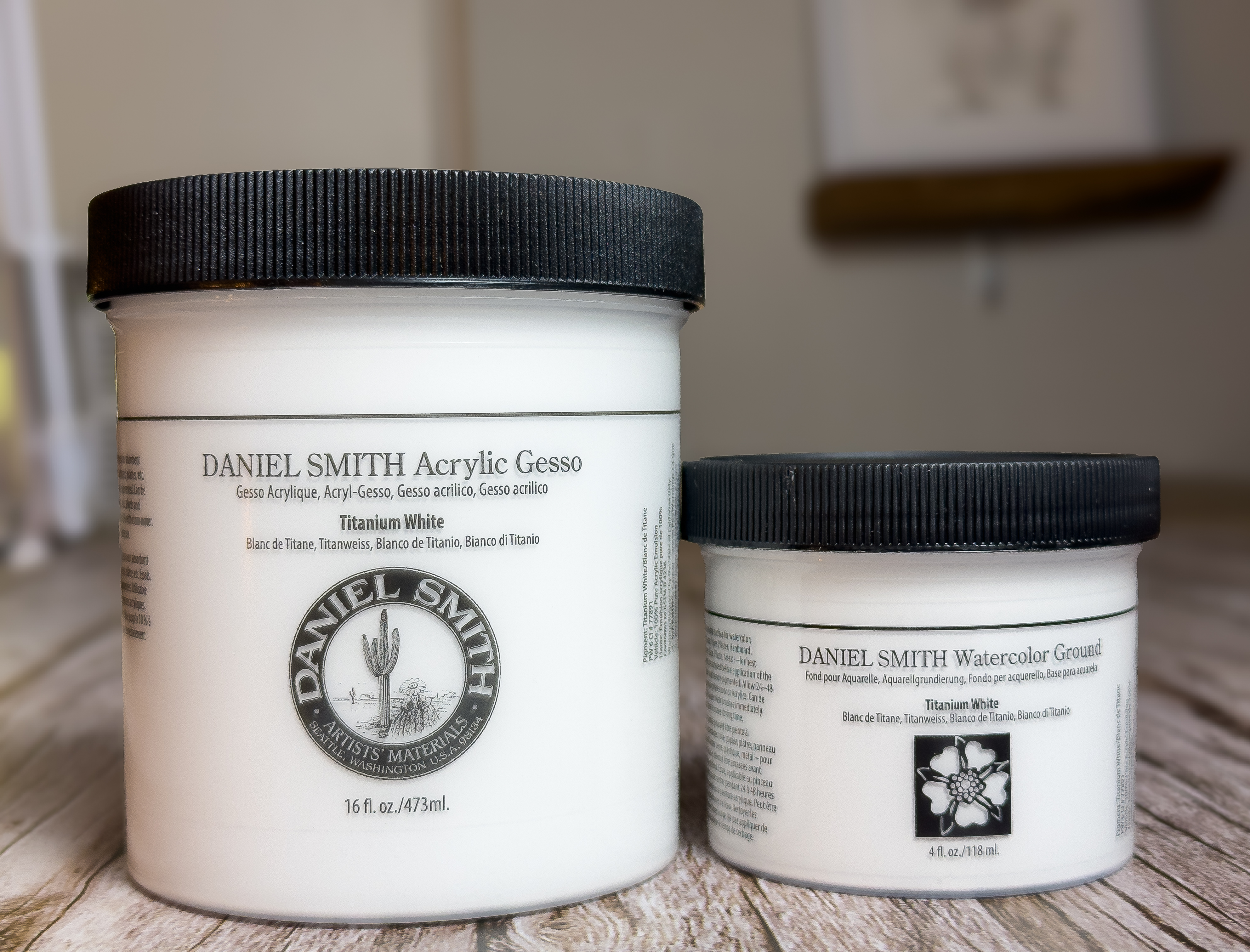
- Gloves to protect your hands and an apron to protect clothing
- Mat board scraps (archival if possible)
- Wooden art panels (lightly sanded and dust-free)
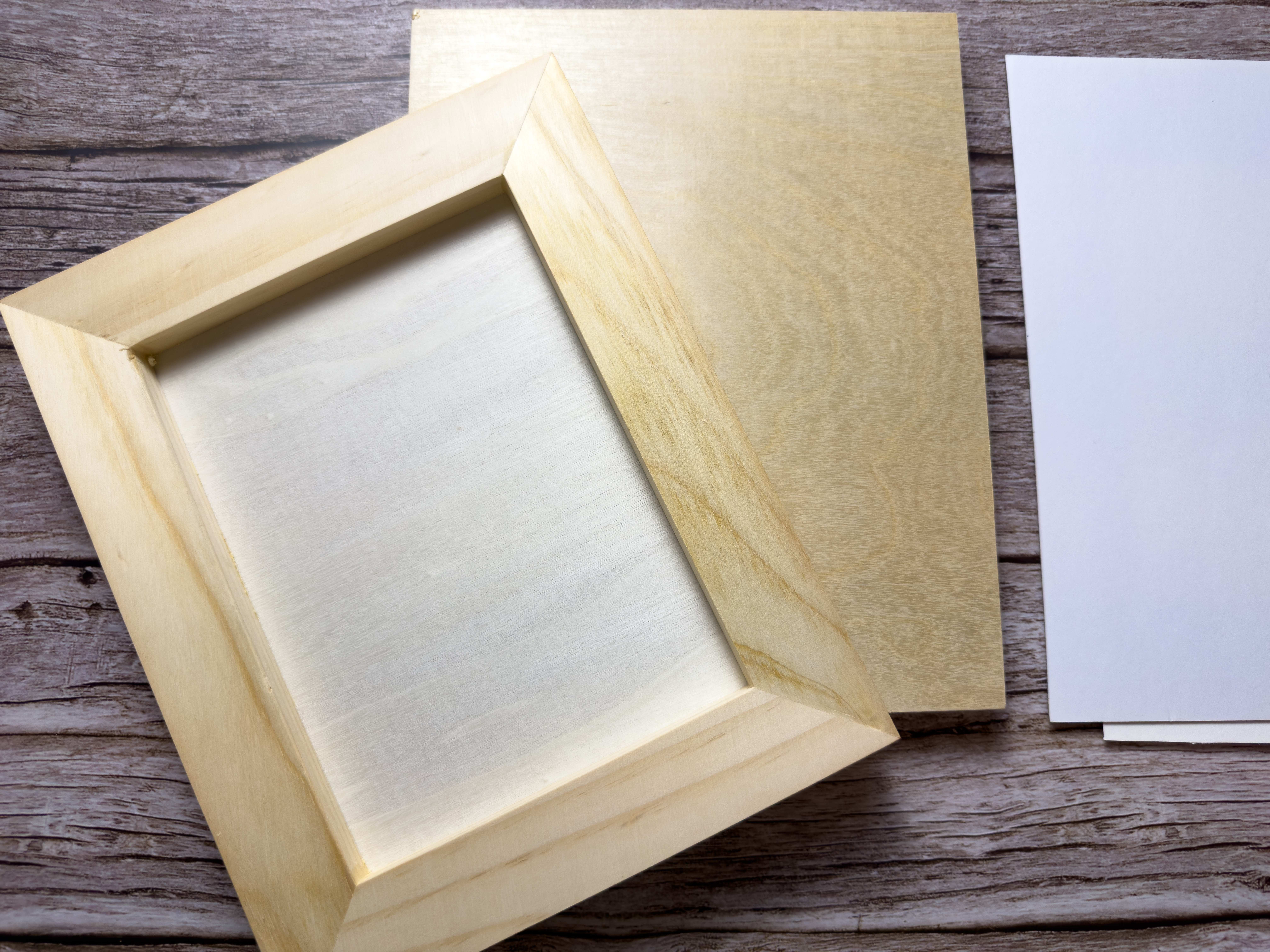
- Fine grit sandpaper (400 grit)
- Painter’s tape (optional for clean edges)
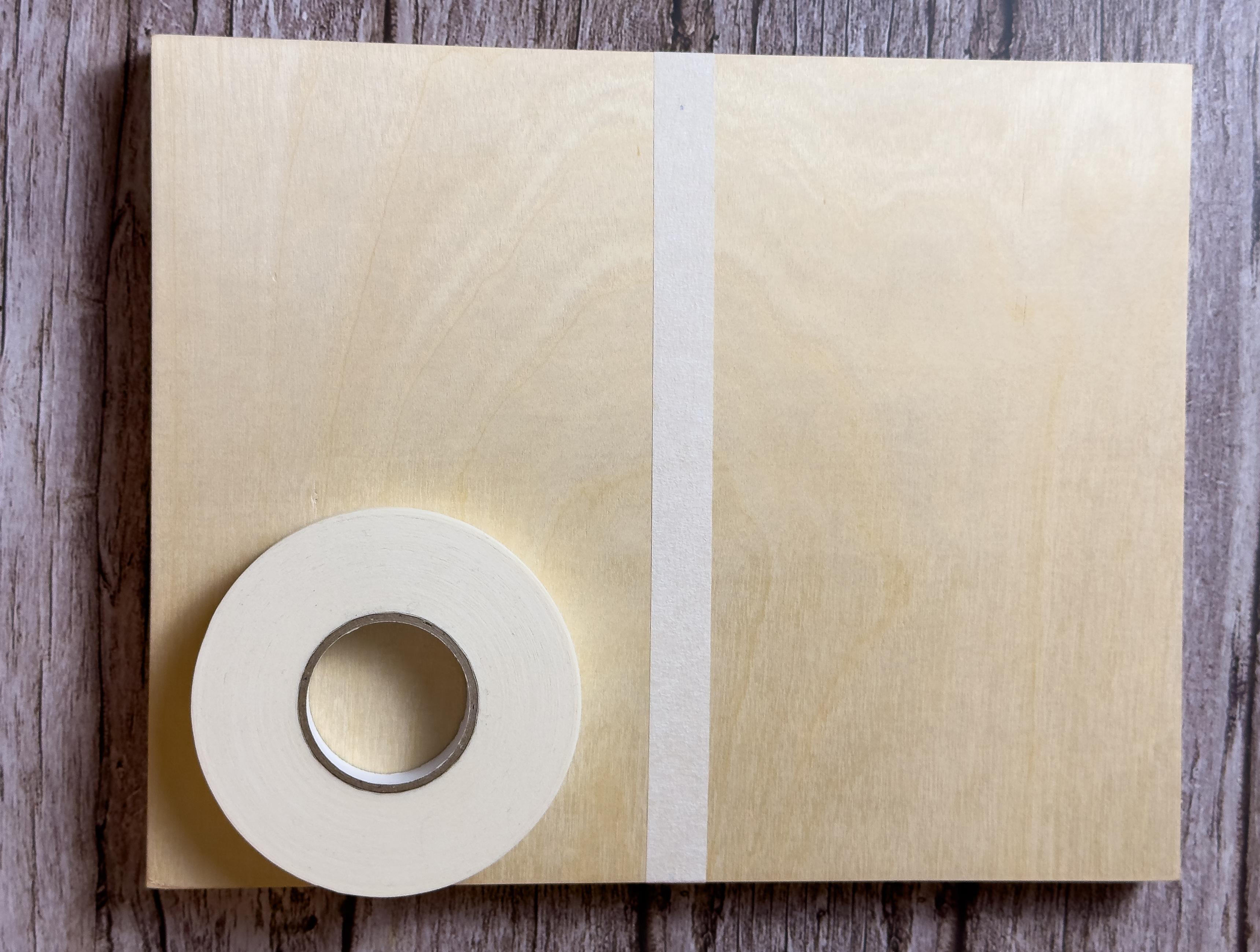
- Foam brush or foam roller
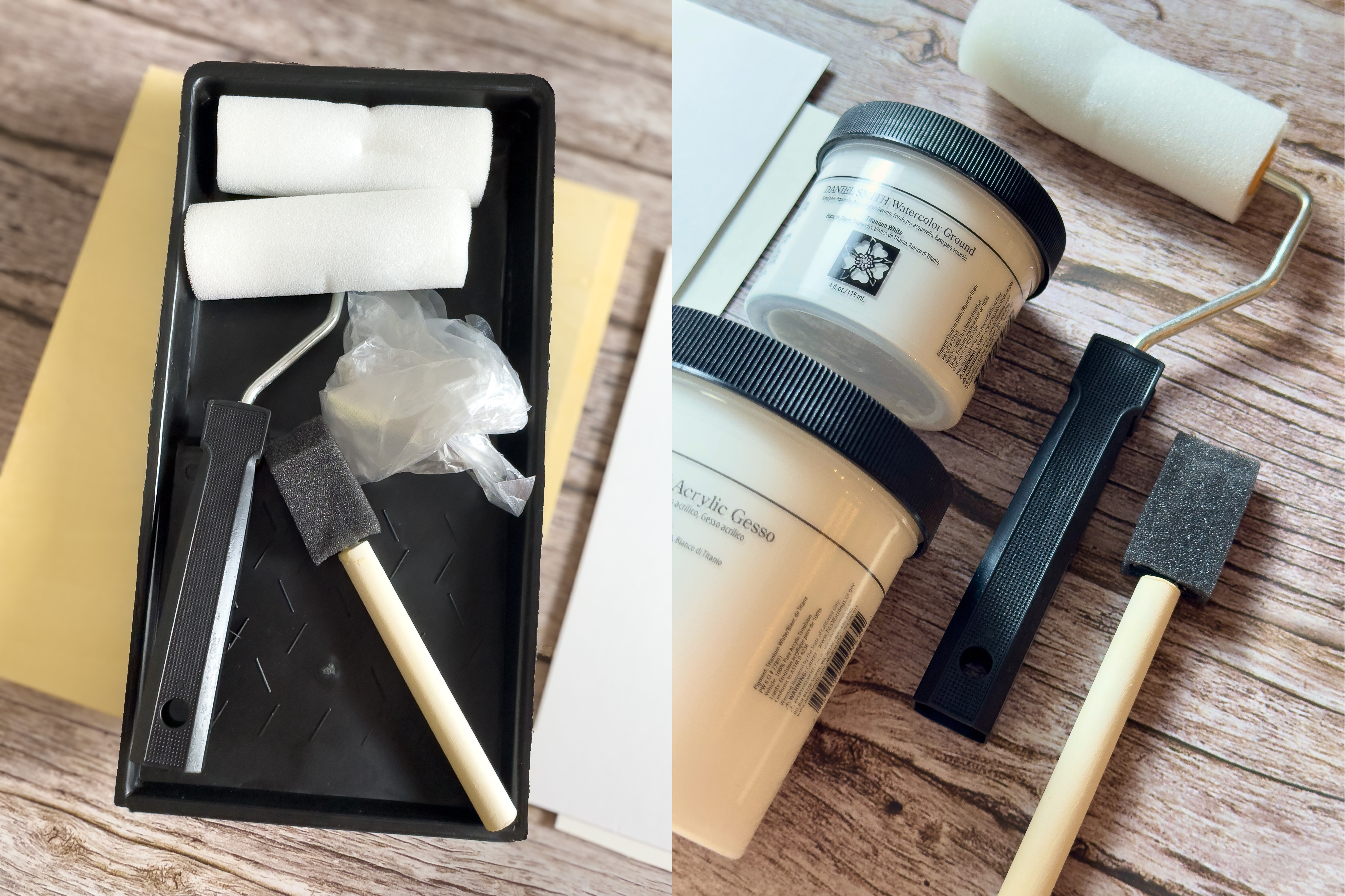
- Palette knife (optional, a fun way to apply and mix gouache)
- Brushes, mixing palette, and water container
Wrap Up
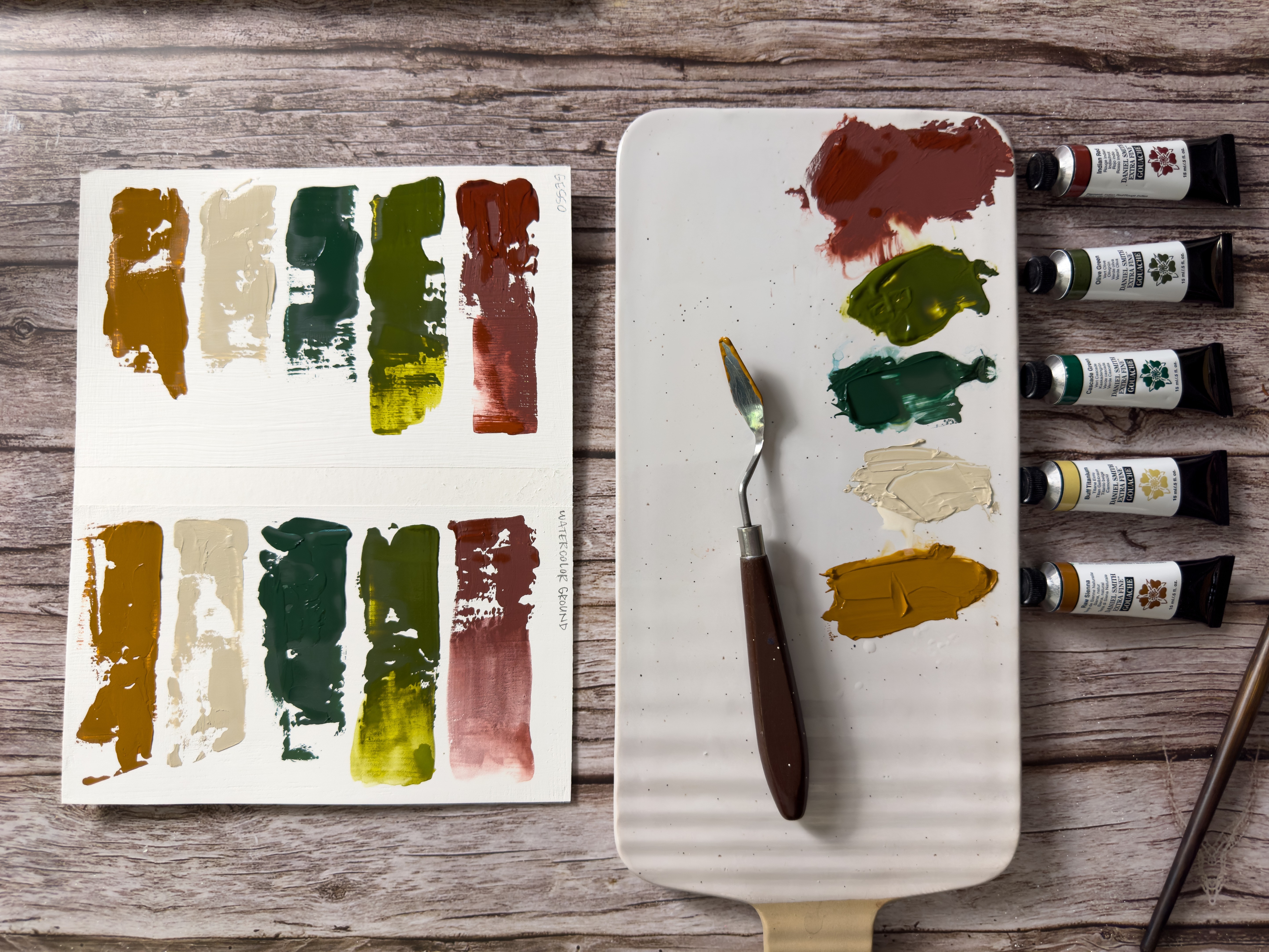
Prepping your surfaces with Gesso or Watercolor Ground opens up endless possibilities for where you can paint with DANIEL SMITH Extra Fine™ Gouache — from everyday items to natural wood panels.
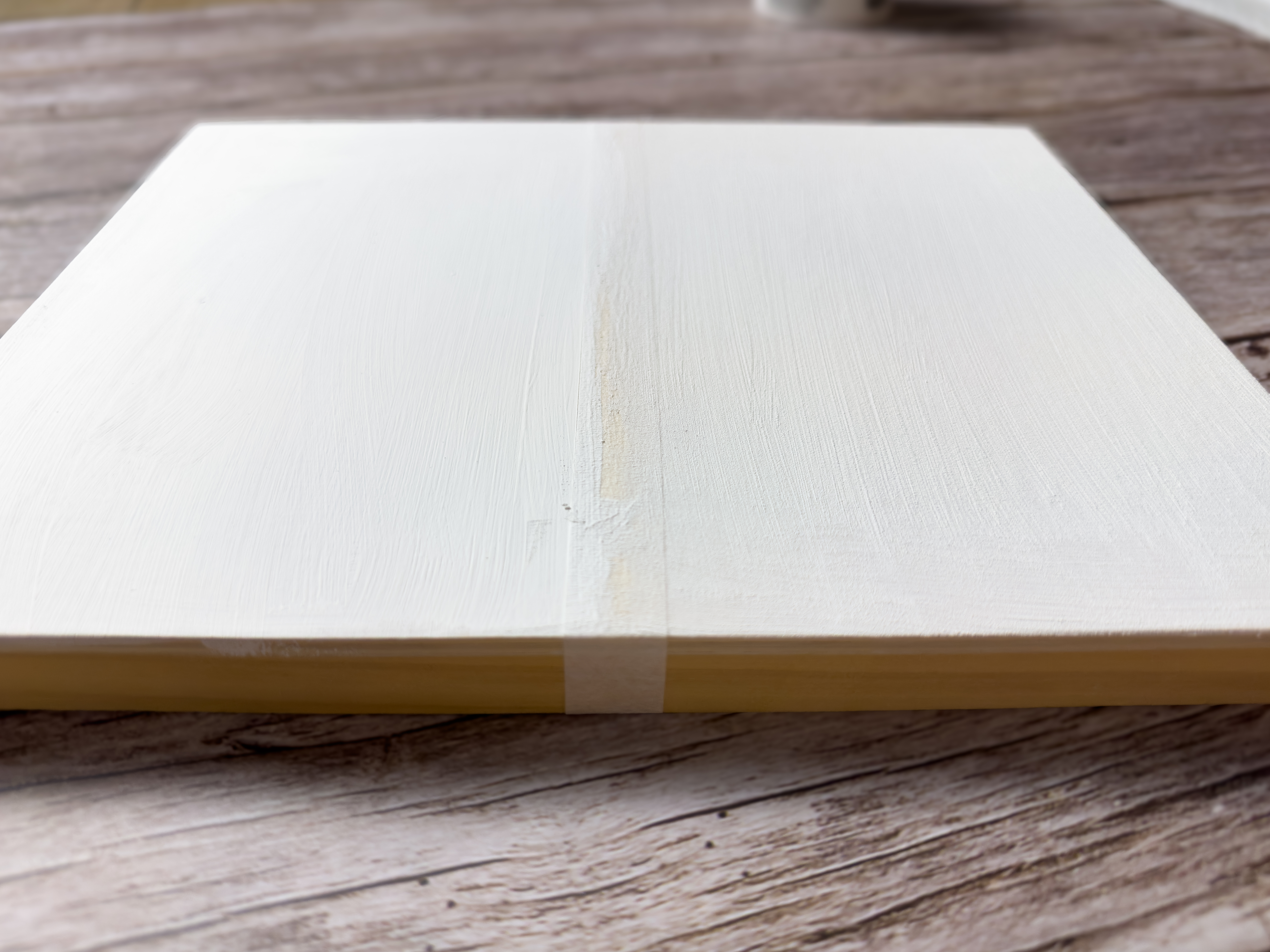
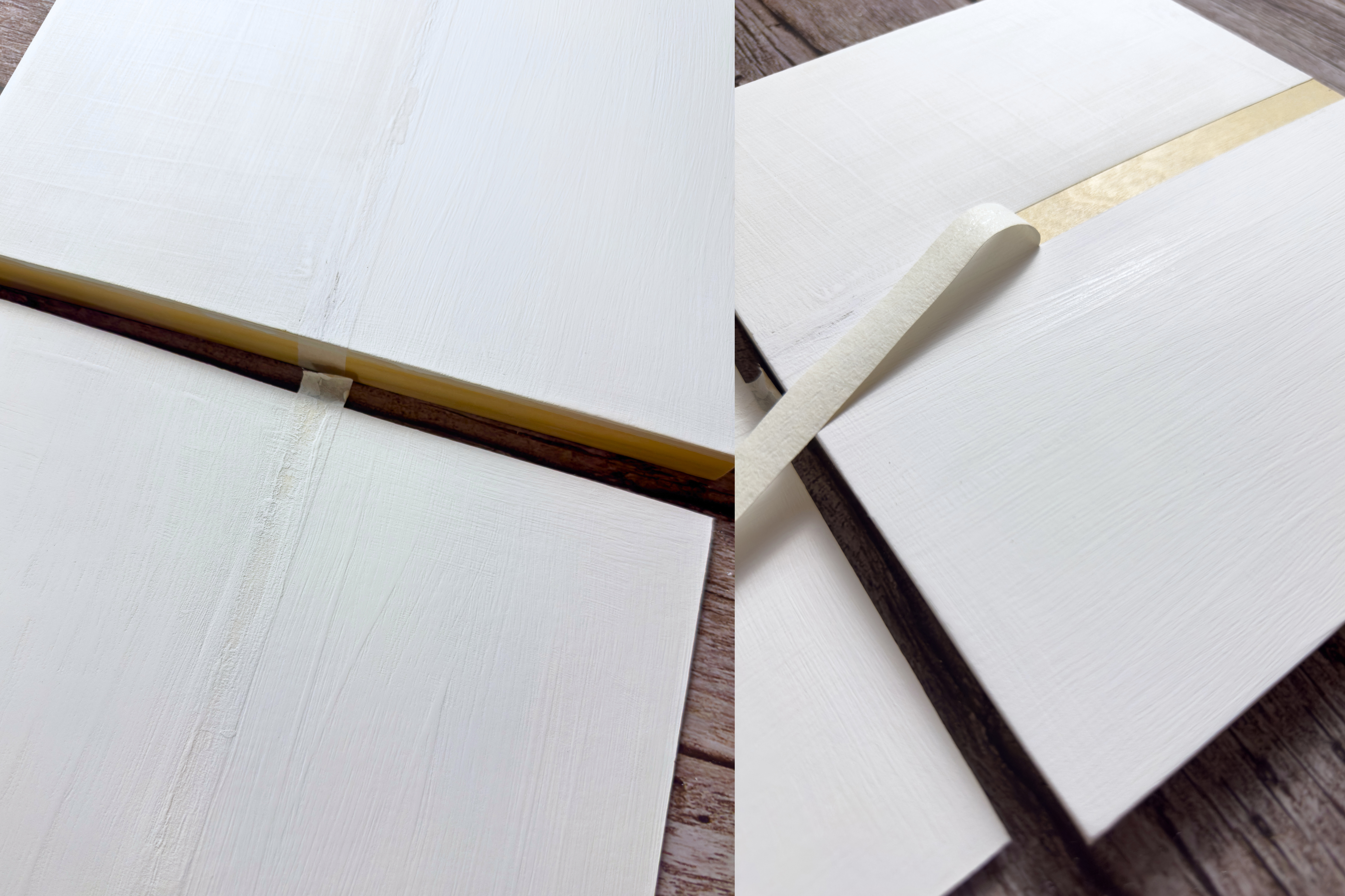
Which surface will you try first?
Tag us @danielsmithartistsmaterials on Instagram — we’d love to see your creativity!

